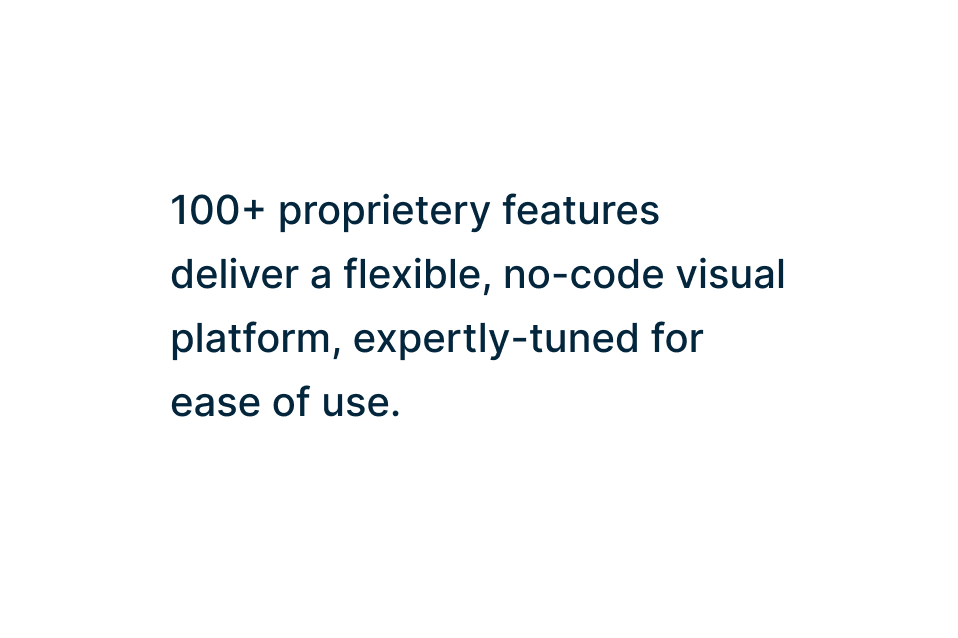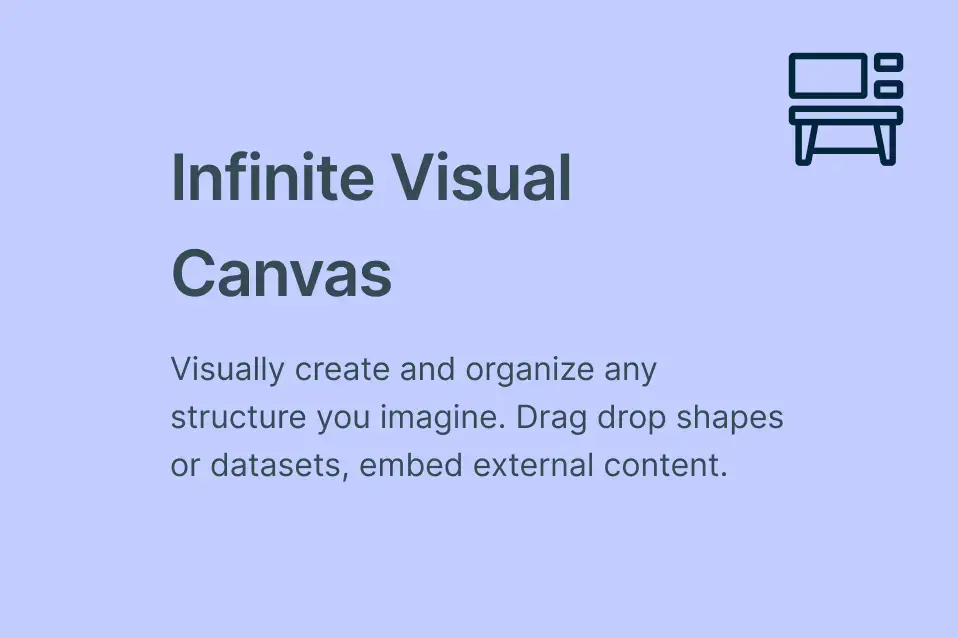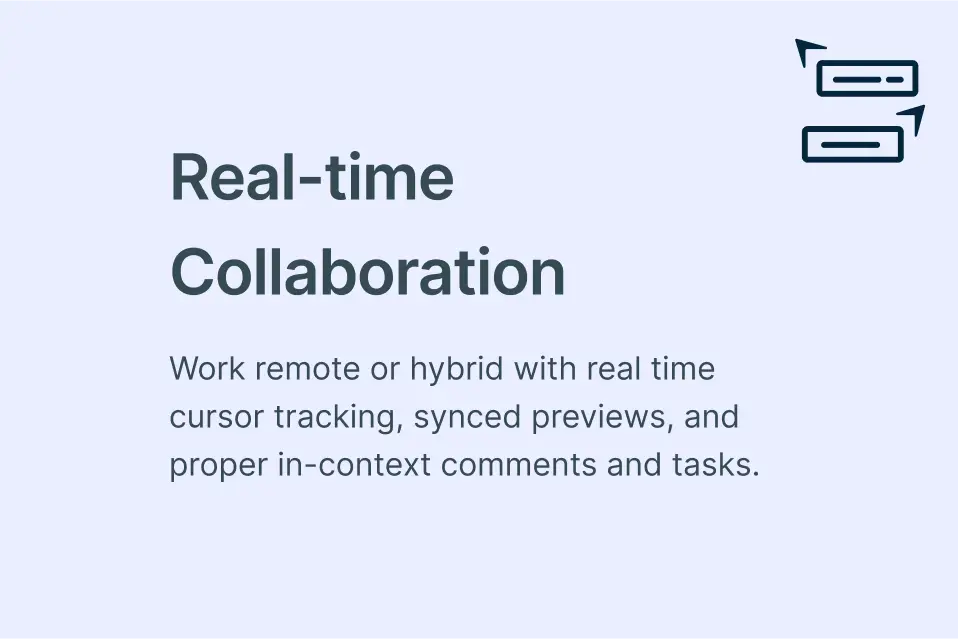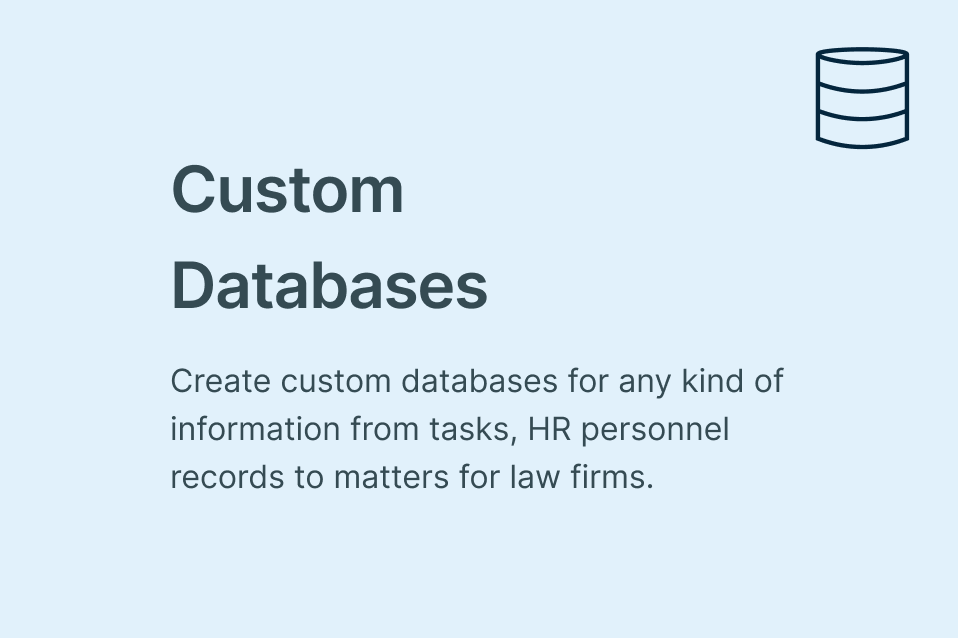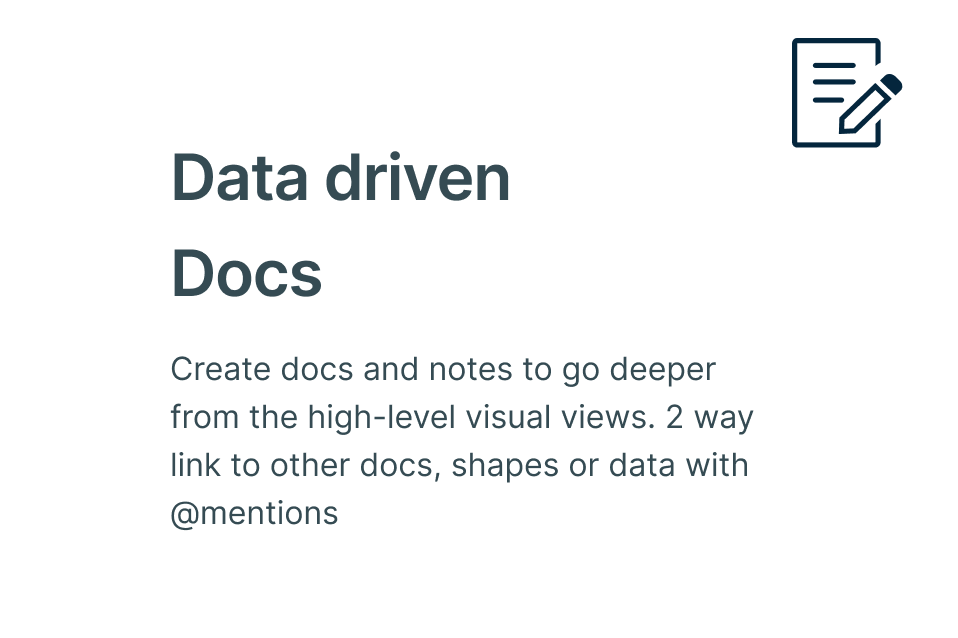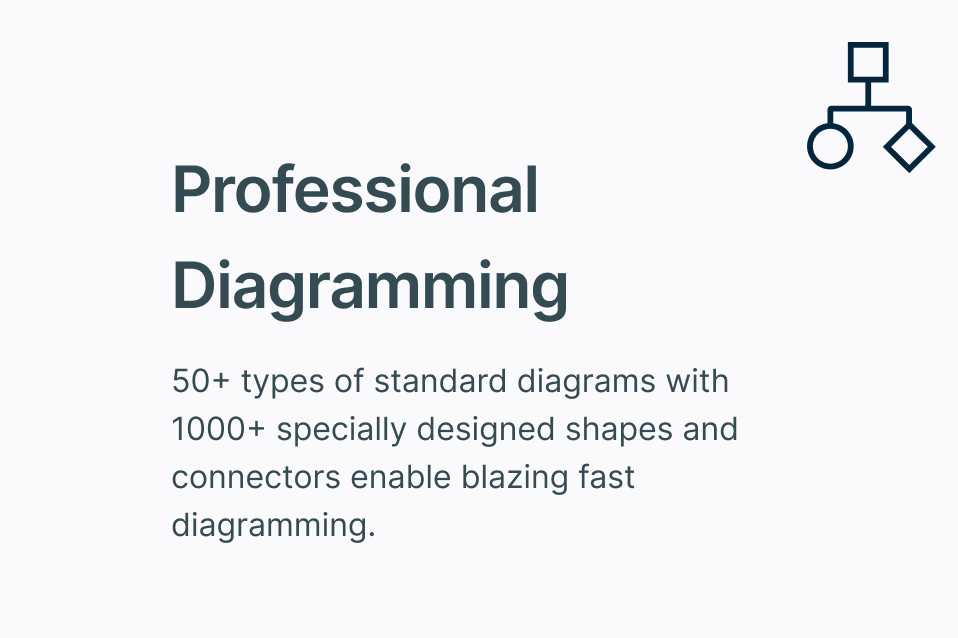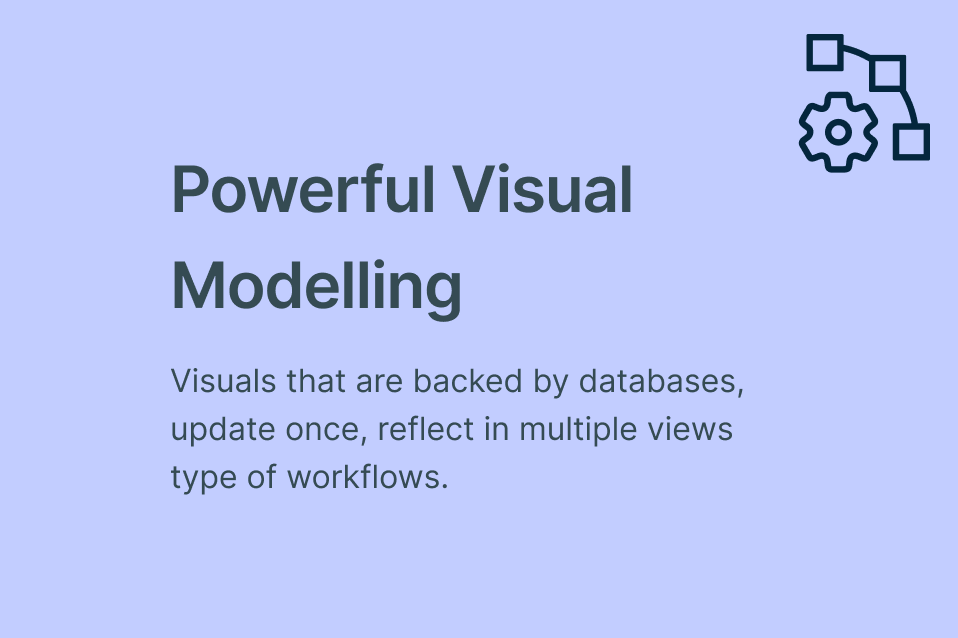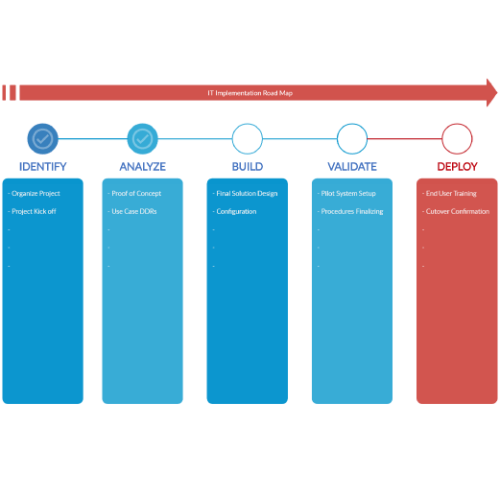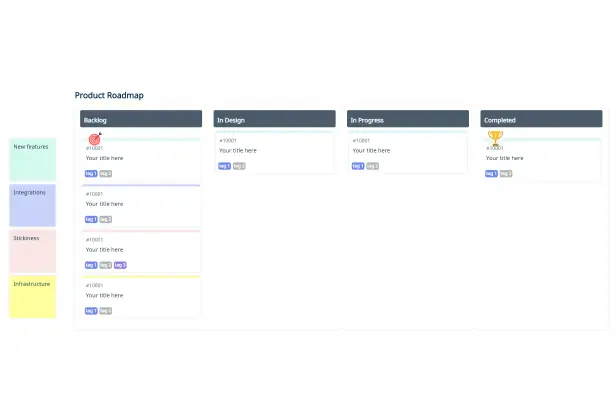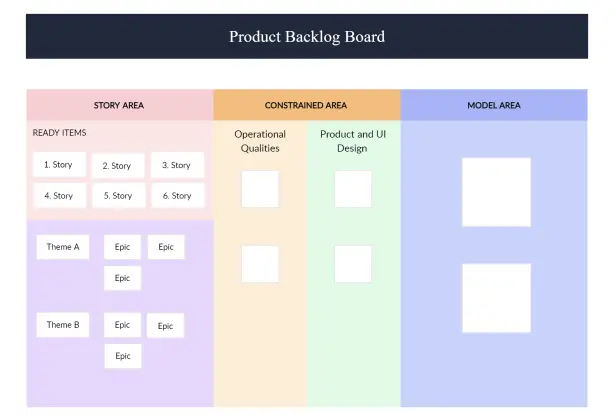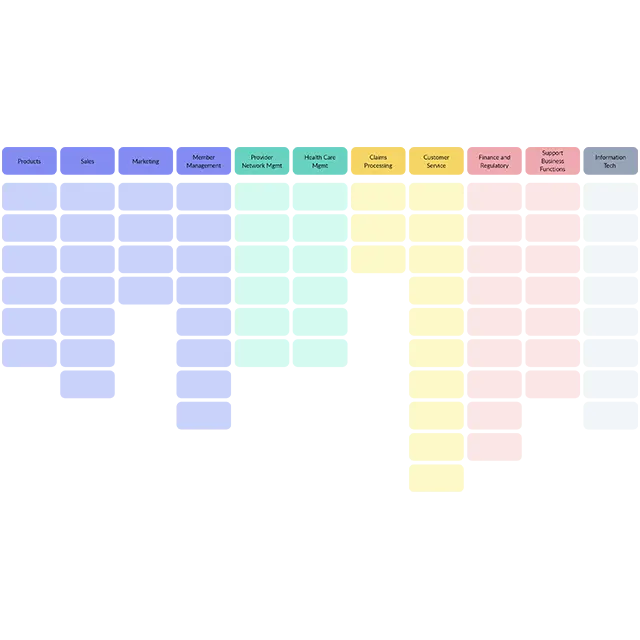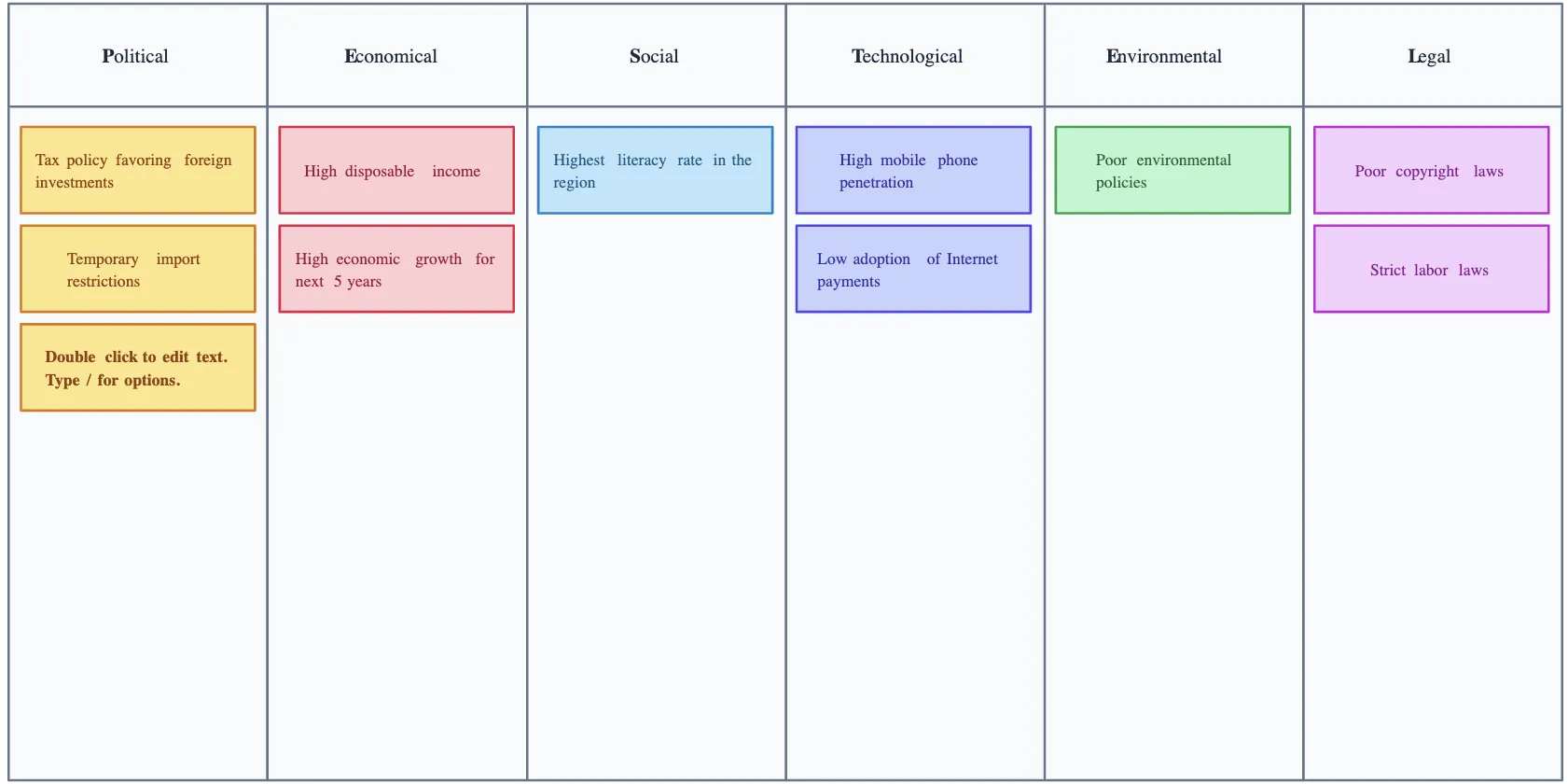Business Roadmap Template
Establish a Clear Vision, Goals and Plans
Develop strategies to achieve the key goals of the organization and devise actionable plans to help your team achieve them.
- Multiple pre-made templates
- Collaborate with multiple stakeholders
- Export in multiple formats for presentations, publishing, and printing
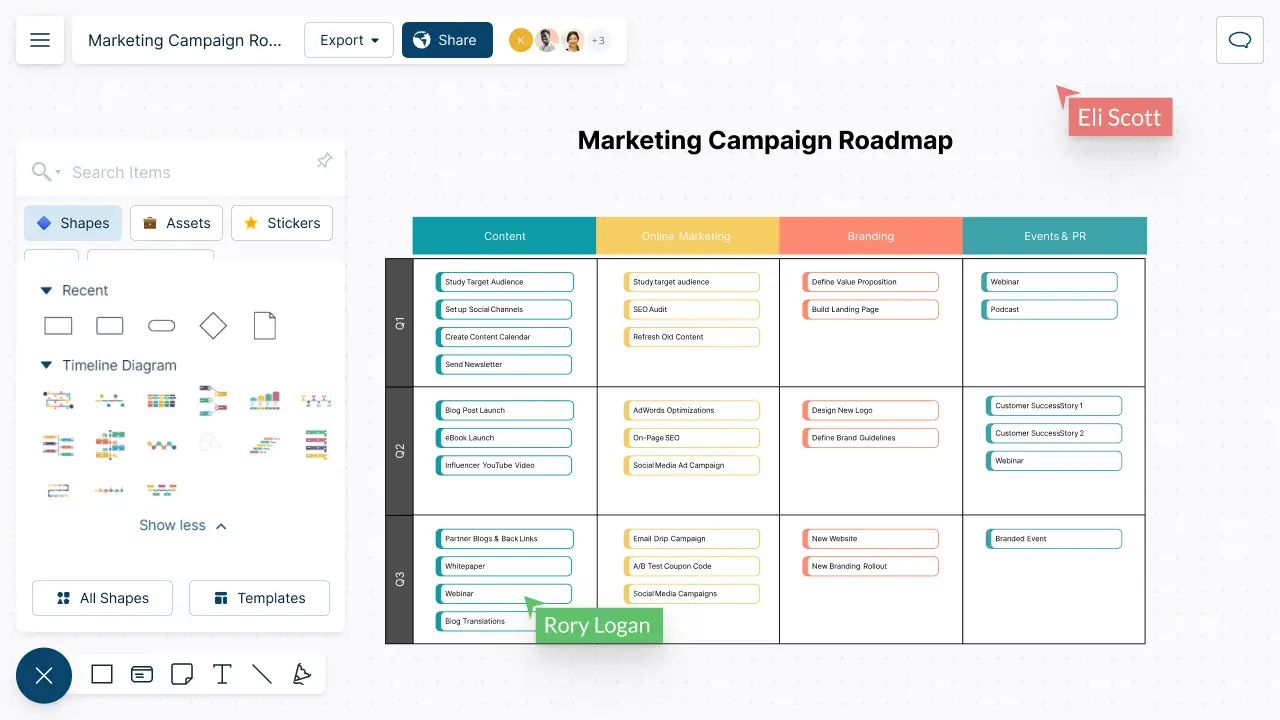
- Multiple pre-made templates
- Collaborate with multiple stakeholders
- Export in multiple formats for presentations, publishing, and printing

Business Roadmap Templates to Scale Your Business to the Next Level
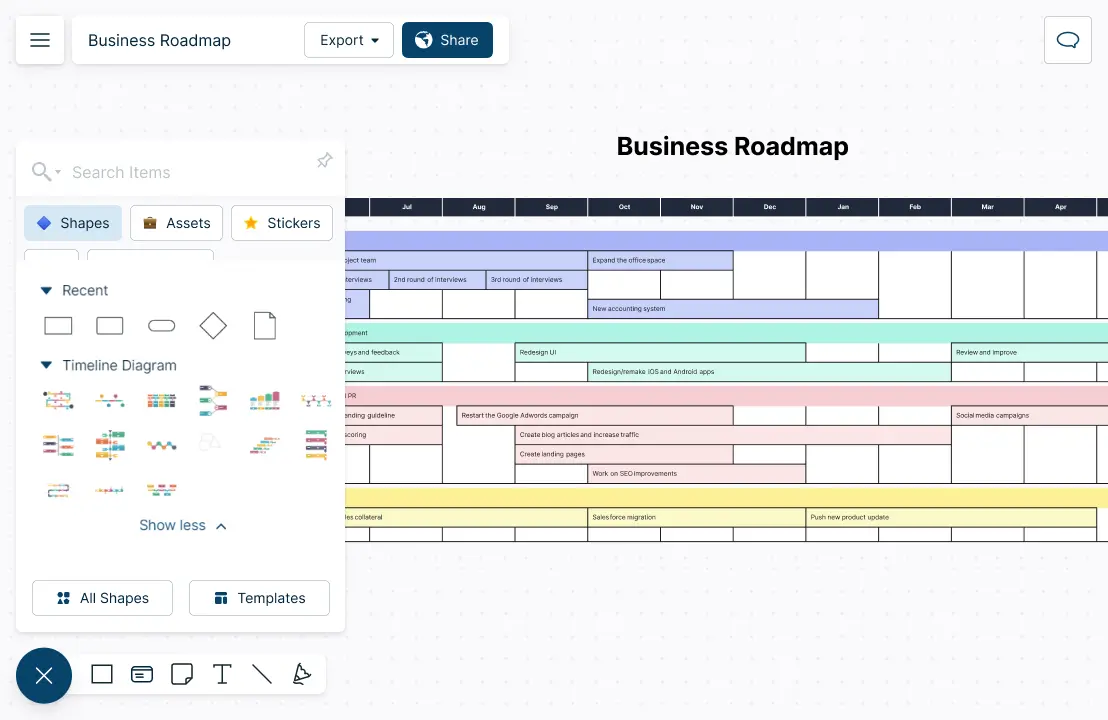
Create actionable business plans with Kanban boards, and advanced formatting options

Start creating your business roadmap with your team to get a clear overview of your tasks and milestones. Use Kanban boards, tables, and shapes to start from scratch, or select a pre-made template for a quick start. Customize text, color, and style to visualize better.
Brainstorm and plan with teams by collaborating and syncing up
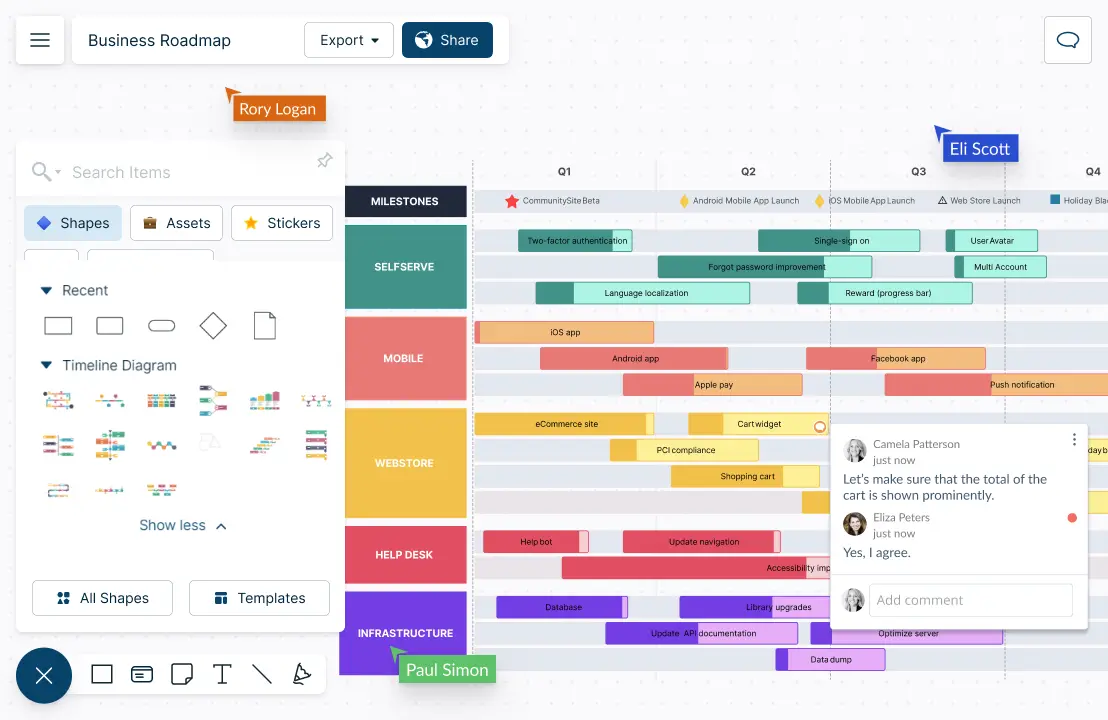
Get together with your team to discuss and analyze long-term strategies and approaches. Use whiteboarding capabilities and intergrations to have dynamic discussions. Share the workspace for editing and reviewing with real-time cursors for any number of participants.

Stay on top of business plans by going from planning to execution with task tracking
Go beyond planning to execute business plans with task tracking and smart notifications, all in the same workspace. Assign tasks to team members, set due dates, track progress, and link information.

What is a Business Roadmap?
The business roadmap is a visual representation of your organization’s primary goals, objectives, and strategies. It provides a high-level overview of the big picture without going into finer details while highlighting the tasks, roles and responsibilities, and deadlines. A roadmap is essentially a timeline; you can outline what activities will take place each week, month, quarter, or year.
Another way to look at a business roadmap is as a long-term strategic document that summarizes where the company is heading and the steps needed to get there. One important thing to remember is that business roadmaps provide a certain degree of flexibility. It can be detailed or brief. Activities outlined in the business roadmap can also be changed to reflect current circumstances and the environment better.
Why Do You Need a Business Roadmap?
You may ask why you need a business roadmap when you already have a business plan. The answer is simple. While the business plan is a long and detailed document requiring in-depth reading, the business roadmap summarizes the most critical information needed to understand at a glance. The roadmap gives a general idea about what you should be doing next without any frills attached. Some advantages of using a business roadmap are,
Shows how the company or business will grow
Provides a visual timeline and an illustrative guide on tasks to make progress tracking easy
Acts as a guiding document, helping teams to understand the reasoning behind their work
Helps to keep team members and stakeholders aligned with the company’s vision and objectives
Allows to visualize tasks and deadlines that are relevant to different departments
Helps to analyze the performance of a company for future potential
How Can Teams Benefit from Using Business Roadmaps?
Roadmaps can provide a shared understanding of the project’s or organization’s direction, timeline and priorities. Below are a few ways that a team can use business roadmaps to collaborate.
- Aligns the team around a set of common goals and objectives
A roadmap helps a team to visualize the high-level direction of the project or organization. It can help team members to better understand their roles and responsibilities in achieving the objectives.
- Encourages collaboration
Roadmaps provide a shared understanding regarding the direction of the project/organization and the timeline. To make sure that everyone is on the same page, involve the team members in the roadmap planning process. Working together, the team can develop a shared vision and a sense of ownership.
- Helps to identify dependencies and risks
As the team lays out each and every step, roadmaps can help to identify potential dependencies and risks that can affect the project’s or organization’s success. The roadmap can highlight potential roadblocks and the team can work together to find solutions and mitigate risks.
- Helps to plan, prioritize and track progress of tasks
When strategizing, use a roadmap to plan, breaking down the overall vision into smaller and more manageable tasks and to prioritize what needs to be done. This will also ensure that everyone understands their role in the bigger picture, are on the same page, and will work towards the same objectives.
- Communicates progress effectively
A roadmap is a useful tool to communicate progress to stakeholders and team members. Communication is key to keeping everyone on the same loop about the project’s status and to give a head’s up if any work needs adjustments to meet the upcoming deadlines and goals. Make sure to update the roadmap regularly to include completed tasks and upcoming milestones.
Business Roadmap Examples to Get You Started
Most times, business roadmaps take on a timeline or swimlane view.
1. Timeline view: In a timeline view, the roadmap provides an overview of significant milestones/projects and deadlines by the team. Through a timeline view, you can accurately see each team’s resource and time allocations and how they contribute to the business’s overall growth. Each team will clearly understand how they must structure their work to meet the milestones and deadlines.
2. Swimlane view: The swimlane view is ideal for businesses that don’t want to allocate specific timelines to every task. You can arrange the swimlane view to show projects that are in progress, scheduled, or proposed to see how the business is developing. You can have swimlanes assigned to each department or team while organizing items by timeframes, giving a quick view of the main projects a team is working on at a given period.
There are several different types of roadmaps that you can use depending on your requirement and business function. It is important that you understand which business roadmap is suitable for your business. Some business roadmap examples include,
Business roadmap: The most frequently used roadmap that layout the business’s overall goals, projects, strategies, and deadlines. Most useful for company heads and managers who want to understand how the various departments and allocated resources work together.
Business development roadmap: This roadmap helps to visualize tasks so that you can look at the bigger picture; which tasks contribute to and enhance the business’s growth, productivity and revenue?
Business intelligence (BI) roadmap: Mostly used by business intelligence leaders or managers to visualize BI-related business areas. It maps out the connections between staff, operations, and other internal processes to see what needs to be optimized to grow the business.
Marketing strategy roadmap: Used by marketing teams, the roadmap helps to visualize the connection between marketing initiatives and the organization’s goals/projects.
Project roadmap: Dedicated to projects, this roadmap will focus on one team or a small group of people relevant only to one project. It visualizes the tasks and deliverables with clear timeframes. Useful for project managers.
Department roadmap: This roadmap focuses on a particular department and its goals. Using a department roadmap can help ensure everyone on the team is on the same page and working towards the departmental goals.
IT infrastructure roadmap: Helps to visualize the technology architecture of a business. This is useful for IT teams and professionals to better handle issues and future releases.
How to Create a Business Roadmap Template?
- Start by defining the overall vision and strategy for the business
Define where the business should go. Understand how you plan to build value for your target customer.
Use Creately’s whiteboarding capabilities and intergrations to brainstorm with your team and have dynamic discussions.
- Identify the goals, objectives, and KPIs
Keep your customers in mind when identifying goals, objectives, and KPIs. Use sticky notes and cards to note down important information.
- Prioritize and set strategies and milestones
Devise strategies outlining how you will attain the defined goals. Prioritize according to the importance and include activities and milestones to track progress and success. Strategies can be broken down into different sections as carried out by separate teams.
The team involved in the planning process can come together to dot vote to prioritize on the same canvas. Put together the roadmap template from scratch using tables or Kanban boards or use a premade template. Customize with color themes and styles for better visualization.
- Develop activities and assign tasks, responsibilities, and time frames
Develop your tactics to carry out the strategies by clearly outlining the actions of each department/team. At the same time, generate methods to measure success. Include these activities in the roadmap.
Use the task panel to assign tasks to each department and team member. Set deadlines and include additional information for each activity or milestone using the notes panel. Import documents and images if required.
- Share with others for feedback
Now you can share the workspace with others to review and finalize. Invite your team to contribute. Use in-line commenting to have discussions and follow-ups on the same canvas.
Once completed, share your business roadmap with the rest of your organization. Download it in PNG, SVG, or PDF image formats for publishing.
- Now you can streamline your tasks and track progress
Start tracking the progress and the growth of your business. Use smart notifications to inform about upcoming deadlines and when tasks are completed.
FAQs About the Business Roadmap Template
What is a business roadmap template?
Is there a difference between the business roadmap vs product roadmap?
Yes, there are several differences. Though a product roadmap is sometimes defined as a type of business roadmap, there are some crucial differences between the two. They are,
Business roadmaps are usually developed annually, while product roadmaps are built to accommodate product releases, which could be weekly or monthly
A business roadmap has broader goals, while a product roadmap has goals that are specific and measurable and related to a product and users
Business roadmaps look at work at a higher level with broader milestones and deliverables, while product roadmaps layout day to day work that needs to be completed for each release
To learn more about creating a product roadmap, check out ‘The Quick Guide to Creating a Proper Product Roadmap.’
Who creates or owns the business roadmap?
Why use Creately and not Excel or Powerpoint?
What are some key tips for a good business roadmap?
Make sure that your business roadmap is simple and easy to understand
Include the end goal, short- and long-term goals, milestones, risk factors, timelines, and all steps required to achieve the goal
The roadmap should not be too detailed but should include enough details to understand the direction
Update regularly to reflect the changing goals and environments
Strategize and Plan the Success of Your Business with these Creately Templates
